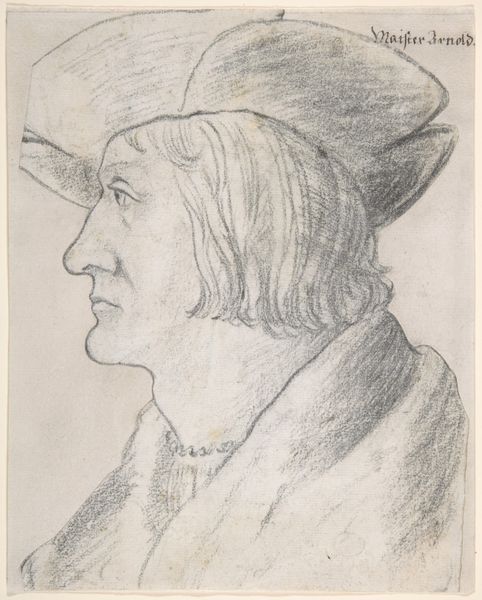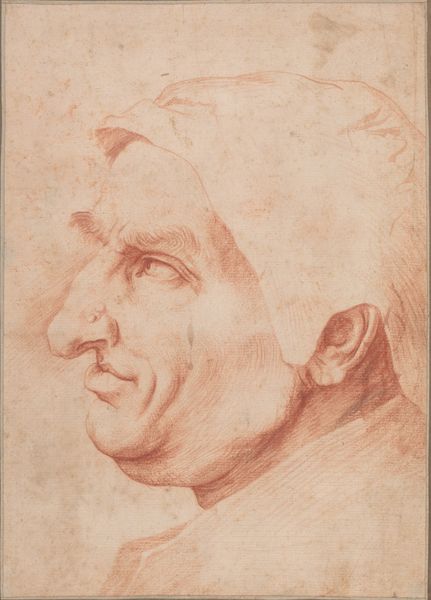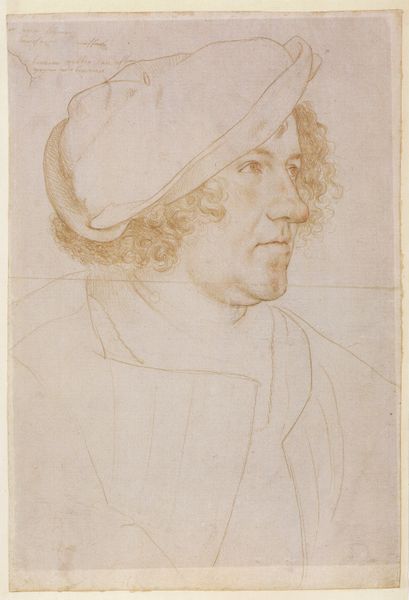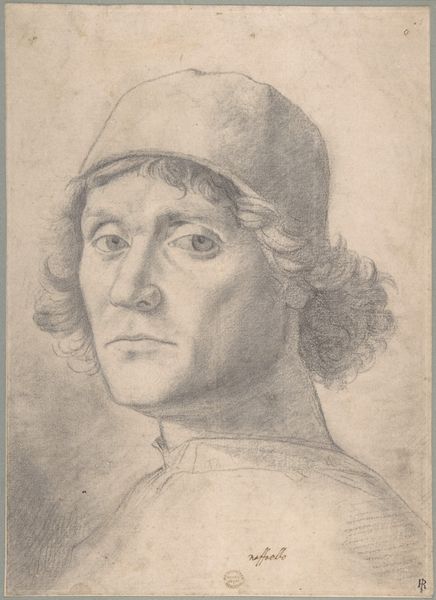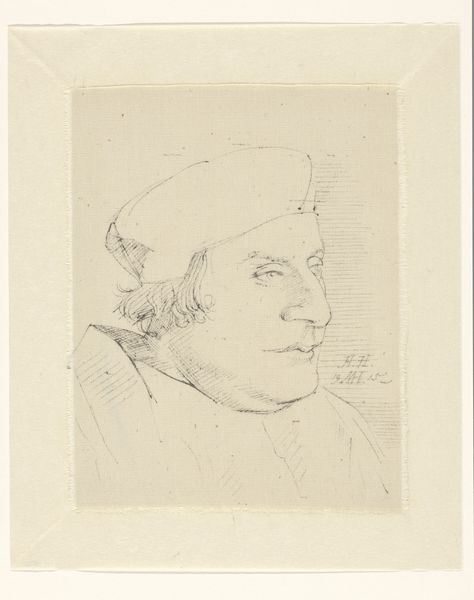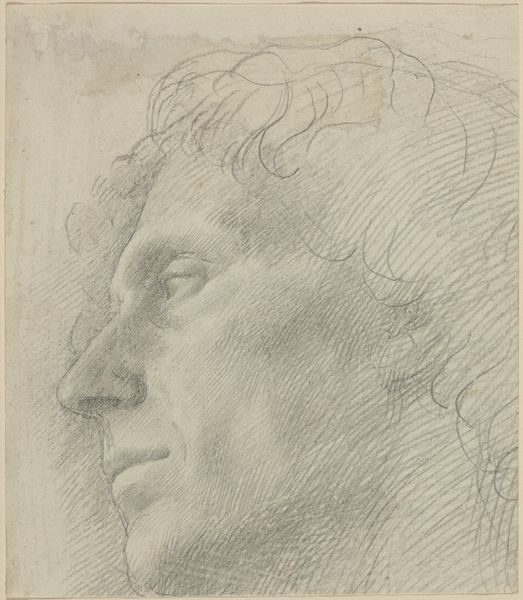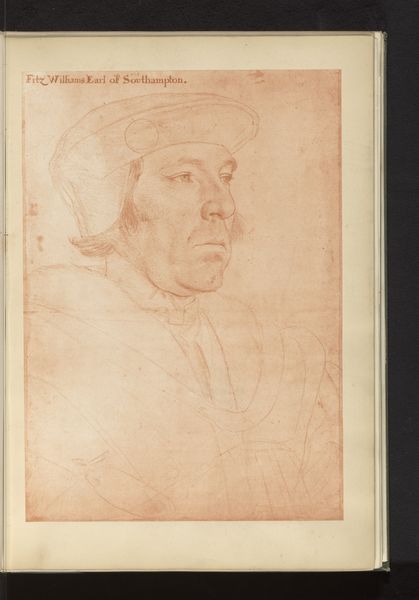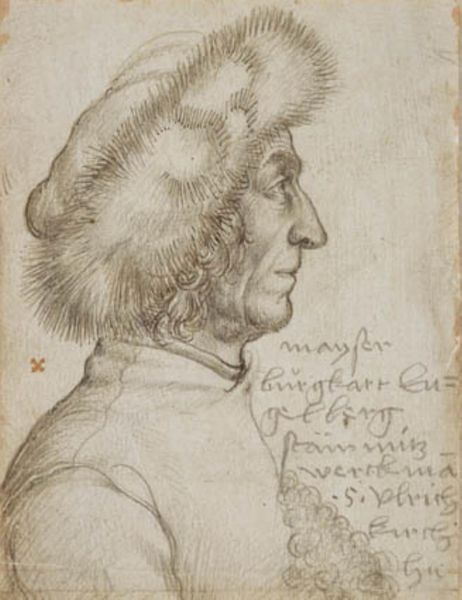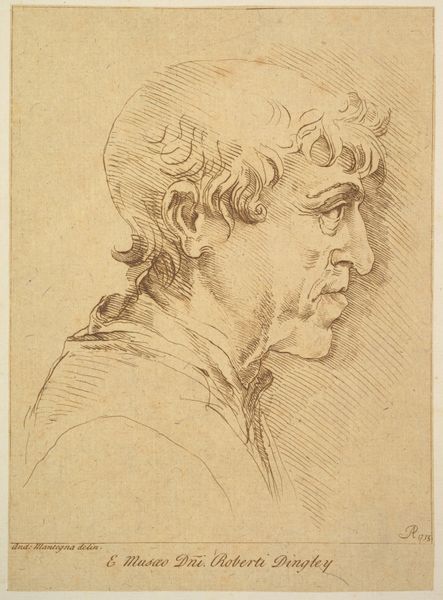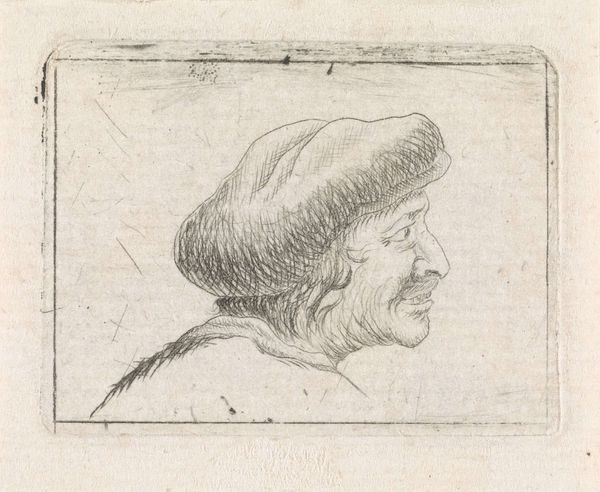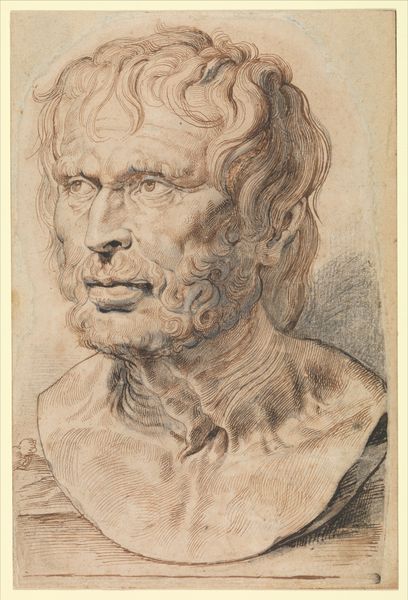
drawing, pencil, chalk, graphite
#
portrait
#
pencil drawn
#
drawing
#
figuration
#
11_renaissance
#
pencil drawing
#
pencil
#
chalk
#
graphite
#
portrait drawing
#
early-renaissance
Copyright: Public Domain
Curator: Looking at this subtly rendered work, we find ourselves in the presence of "Profile Portrait of a Man" by Hans Schwarz, dating from around 1518 to 1520. It's currently housed here at the Städel Museum. Editor: There's something so raw about this, isn't there? It's not idealized at all. You can see the mark of the graphite and chalk so plainly. It feels more like observing a person than a portrayal destined for the royal court. Curator: Schwarz was a member of a prominent Augsburg family, well-positioned in the intricate social and economic fabric of the time. He engaged deeply in the cultural exchanges of the Renaissance, leaving us a prolific collection of drawings and prints. Many of his portraits, like this one, were commissioned, functioning almost like early photographs, defining status and preserving image. Editor: Note how economical the rendering is. The materials themselves tell us so much about Schwarz’s practice. You can sense the artist testing lines, almost sculpting the figure with graphite and chalk, layer upon layer. The medium brings the immediacy to it; a directness absent from courtly portraiture in oils. Curator: Absolutely. It is a fascinating interplay between technique and representation. These portraits were circulated among the merchant classes of Southern Germany. They served a distinct social purpose. They offered visibility and solidified standing within these circles. It suggests the democratization of portraiture. Editor: Yes, exactly! The very portability of the drawings contributed to that dissemination of imagery, undercutting traditional artistic patronage. Curator: Schwarz was exceptionally skilled at capturing individual likenesses while embedding those features within accepted modes of representation. He played within conventions, reinforcing the system that simultaneously enabled and constrained his artistry. Editor: I’m intrigued by the idea of constraint here. Thinking about the labor involved, we could speculate about how his artistic freedom might have been impacted by client expectations and material realities. I do find it captivating to see the under-drawing still so apparent, as though we're privy to the stages of artistic decision-making and its context. Curator: Thinking of it as both artistic exploration and social document really enriches how we understand Schwarz’s contribution, don’t you agree? Editor: Indeed. It transforms how we understand it from an aesthetic experience to also one rooted in the daily operations of culture and artistry.
Comments
No comments
Be the first to comment and join the conversation on the ultimate creative platform.
